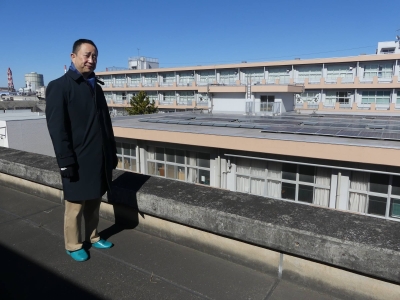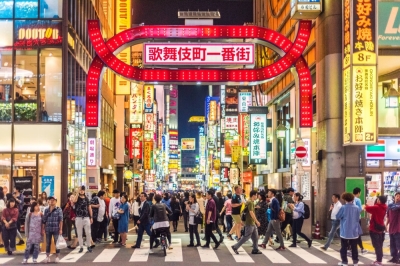These Community pages have reported many times on how the National Police Agency (NPA) has manufactured the illusion of a "foreign crime wave," depicting non-Japanese (NJ) as a threat to Japan's public safety (see "Upping the fear factor," Zeit Gist, Feb. 20, 2007; "Time to come clean on foreign crime," ZG, Oct. 7, 2003; "Foreigner crime stats cover up a real cop-out," ZG, Oct. 4, 2002, for just a few examples).
A decade ago, the NPA could make a stronger case because NJ crimes were going up. However, as we pointed out then, Japanese crimes were going up too. And, in terms of absolute numbers and proportion of population, NJ crimes were miniscule.
Then bust followed boom. According to the NPA (see www.npa.go.jp/sosikihanzai/kokusaisousa/kokusai/H23_rainichi.pdf, or the images accompanying this article), "foreign crime" has fallen below 1993 levels (see H5 column, representing the year Heisei 5)!
That's why the NPA has found it increasingly difficult to maintain its claims of a foreign crime wave. So, to keep up appearances, the agency has resorted to statistical jiggery-pokery.
For example, look again at the NPA chart. The time frame has been expanded to 30 years; in previous annual reports, it covered just a decade. By stretching the parameters, the overall chart depicts a comparative rise rather than a small peak before a precipitous drop.
Not accounted for, however, is the fact that the NJ population has also risen — more than doubling since 1993.
Another method of manipulation has been to focus on partial rises in certain types of NJ crime, despite the overall fall. And I bet you can guess which got more media attention.
The most creative NPA rejig is arguing that NJ crime has been "stopped at a high plateau" (takadomari no jōtai) — even if that "plateau" is downward-sloping.
Every NPA argument leads to the same predictable conclusion: Further crackdowns on "foreign crime" are necessary, because NJ are importing criminality into a once-peaceful Japan.
Yet neither the NPA, nor the Japanese media parroting their semiannual reports, have ever compared Japanese and NJ crime, or put them on the same chart for a sense of scale. If they had, they would see something resembling the 3-D graph that accompanies this column.
The other chart in Japanese (that can be found at hakusyo1.moj.go.jp/jp/59/nfm/n_59_2_1_1_1_0.html and in the accompanying images) — on whose data the 3-D graphic is based — breaks down all crime committed in "peaceful" postwar Japan. Note the (less-reported) concurrent "Japanese crime wave" (especially the middle, yellow set of bars, which depict thefts alone).
Since the right-hand scale is in tens of thousands, the graph tells us that there was a spike to well over 2.5 million non-traffic crimes in the peak year of 2002, a number that dropped to just over 1.5 million by 2009. Compared to 2009's total "foreign crimes" of 30,569 (including visa violations, which Japanese cannot by definition commit), there is a difference of about a factor of 49. Thus "foreign crime" would barely even register on the chart.
So how can the NPA still sex up the stats? They found a new way.
In its 2009 white paper, the NPA talked about how "foreign crime gangs" are increasingly moving into Japan and creating "crime infrastructure" (hanzai infura).
It's still such an obscure term that NPA websites have to define it for the public as "things and organizations that are the basic foundation of crime," i.e., cellphones under fake names, fake websites, false marriages, false adoptions and fake IDs (see www.police.pref.kanagawa.jp/images/h0/h0001_04.gif)
Although this "crime infrastructure" technically assists thieves of any nationality, the NPA's online explanations focus on non-Japanese, with five out of eight examples offered specifically depicting NJ misdeeds (complete, of course, with racist caricatures, at www.pref.ibaraki.jp/kenkei/a01_safety/security/infra.html)
You see this "criminal NJ" narrative again and again on NPA posters, such at the one reproduced here (www.debito.org/wordpress/wp-content/uploads/2013/06/bouhaninfurabokumetsutaisakuJune2013.jpg), found at an immigration bureau last March, warning potential NJ miscreants against "forgery," "bogus marriage," "false affiliation" (i.e., claiming paternity on a foreign child to get it Japanese citizenship) and "false adoption."
Note at the bottom, where the NPA has secured a special goro awase mnemonic phone number (hanzai infura nakuse — "get rid of crime infrastructure") to help Japanese remember it better.
Clearly this "crime infra" campaign is not bowing out anytime soon. In fact, the NPA is now citing it to discount the drop in foreign crime! As their 2010 white paper reports, "the extent of how much crime has become globalized cannot be grasped through statistics" (Kyodo News and Mainichi Shimbun, July 23, 2010).
Seriously? So, suddenly, despite all the Nihonjinron mythologies, NJ are now supposedly more likely than Japanese to act in groups?
Swallow this, as well as the argument that foreigners are somehow more "invisible" in Japan (of all places), and voila, the only conclusion you can possibly draw is that all "foreign crime" statistics come from a little black box that only the NPA has access to.
Look, this is getting silly. You can't ask for a more docile foreign population than Japan's.
Almost all NJ do their work (no matter how unequal salaries and benefits are compared to those of Japanese), pay their taxes and try to get along without committing any crimes. NJ don't even cause trouble by clumping into huge ghettos or keeping a high profile (a recent government poll indicated that 46 percent of Japanese surveyed didn't even know nikkei South Americans are living in Japan!). Nor do they riot every now and again about how horrendously they get exploited; they just hang on by their fingernails hoping for a fair shake in society — one that rarely comes, as protection from discrimination is far from guaranteed by enforceable laws.
That should be enough hardship to contend with, but then in pounces the NPA to make things worse, picking on the weakest members of Japanese society (as it has done for decades, according to scholar Wolfgang Herbert's "Foreign Workers and Law Enforcement in Japan") to justify bogus budgets for fighting exaggerated NJ crime.
Of course, foreigners are a soft target anywhere (by definition, they do not have rights equal to citizens in any country), but in Japan they are so disenfranchised that if anyone points a finger at them, there is no way for them to point back.
NPA excesses have gone on long enough to encourage other bullies. We've seen a recent spike in the activity of Japan's hate groups, most famously the "kill all Koreans" march through Tokyo on Feb. 9. Now how about these anonymous posters making the rounds?
One (reproduced in the images accompanying this column) warns of the allegedly "rapid rise" in fake international marriages for illegal overstayers and workers. Another one calls for kicking out foreign crime (murder, mugging, arson, rape and theft, totaling 25,730 cases — again, a drop in the bucket of Japanese crime).
So, the threat to public safety isn't "crime infrastructure"; it is in fact the "propaganda infrastructure," reinforced by false NPA arguments, that normalizes public displays of xenophobia and hatred in Japan.
One measure of a society is how it treats its weakest members. Japan's systemic and unchecked bullying of NJ is going to hurt others, as emboldened haters eventually turn their attention to other weak social minorities.
Message to government: Rein in the NPA, and stop them constantly bashing Japan's foreign residents. Expose their statistical hogwash for what it is, and redirect budgets to fight crime in general, not "foreign crime" specifically.
Debito Arudou's updated "Guidebook for Relocation and Assimilation into Japan" is now available as a downloadable e-book on Amazon. See www.debito.org/handbook.html . Twitter @arudoudebito. Just Be Cause appears on the first Community pages of the month. Send comments and story ideas to community@japantimes.co.jp .



















With your current subscription plan you can comment on stories. However, before writing your first comment, please create a display name in the Profile section of your subscriber account page.